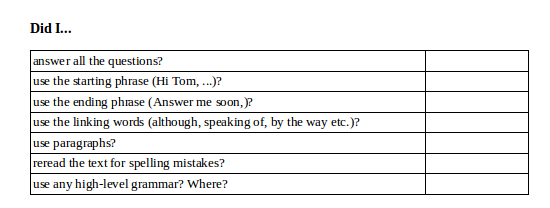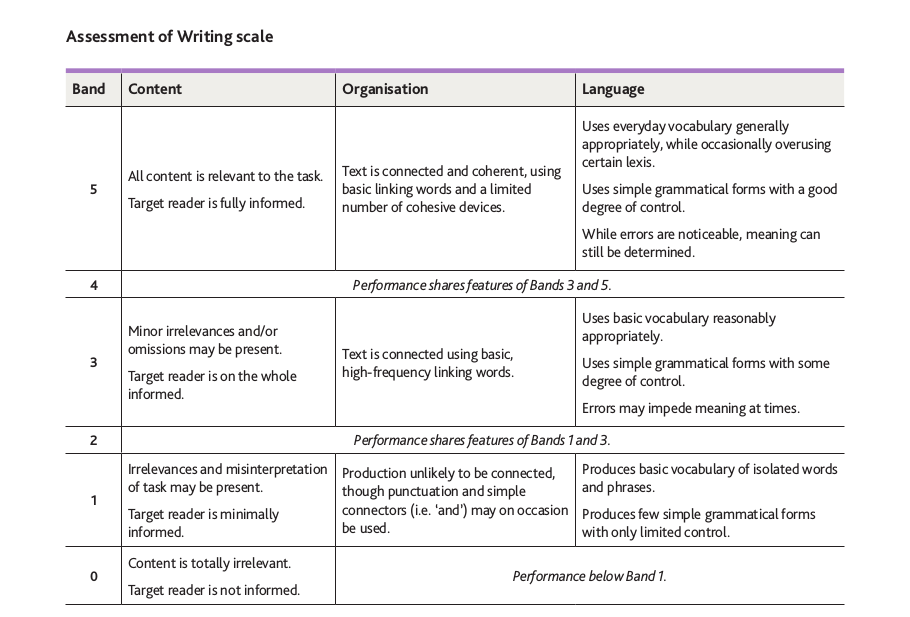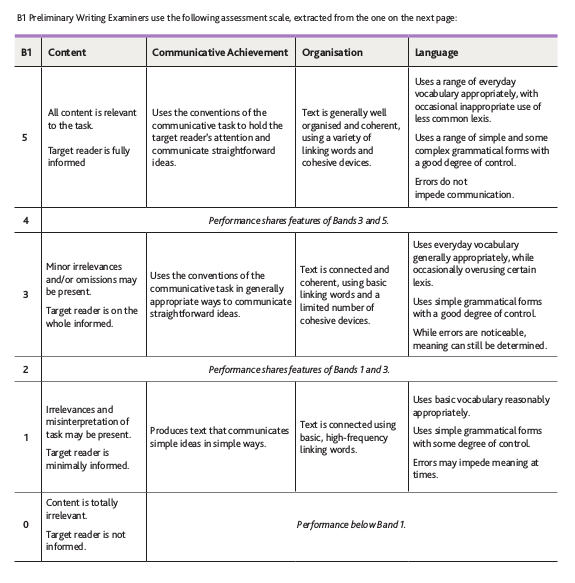When it comes to Cambridge exams, the writing part usually seems to be the most complicated and unclear. This is where language knowledge combined with the format, word limit, and Cambridge assessment scales can cause problems for even the most prepared students – and their teachers. In today’s article, we’ll try to figure out what to do and how to help with writing for A2 Key and B1 Preliminary.
Format
In 2020 the exam format of KET and PET exams will change. However, there aren’t too many changes in the writing part.
A2 Key still invites students to work with two writing tasks: an email and a story.
B1 Preliminary also checks the skill of writing an email. As well, it offers the candidates to choose either a story or an article in the second task. The most common problems identified with the format are the following:
- A lot of students forget about starting and ending phrases in an email;
- They might mix formal and informal style, for example, avoid using contractions or use something like ‘Sincerely yours’ at the end;
- Some tend to omit bullet points or key pieces to include as they don’t read the task attentively enough;
- Stories might lack coherence, e.g. linking words or sequencing;
- Little or no paragraphing is done;
- Students prefer stories to articles, just to be on the safe side, as they are not aware of the format at all.
Some general recommendation would be to use checklists for self-check and peer check. You can use something like this for students’ self-check or create your own form for every particular task format you are working with:

You can find more ideas on peer feedback in this article. Students will benefit more from such an approach than from just receiving back their work which is checked by the teacher only.
Word limit
In Russia, students are used to having their limit for writing in pages, not in words. Such a tiny difference leads to the fact that most of them consider word limit insignificant and write less or more than a task requires.
A2 Key asks them to write 25+ words in an email and 35+ in a story. There is no upper limit mentioned by Cambridge, so here it’s important to teach the students not to write less.
For B1 Preliminary it is 100 words for both the email and the story/article. Here is what they write in Cambridge English: Preliminary (PET) Frequently Asked Questions (FAQs):
“You are advised to write about 100 words. Although you won’t be penalised for writing more, you may have included information that is not relevant, which could have a negative effect on the reader, and you could lose marks for this. If you write less than 100 words, your score could be affected because you may not have used an adequate range of language and/or provided all the information required”.
Some general tips for exam candidates would be the following:
- Get used to counting the words, at least roughly. Ideally, it’s good to know how many words an average line of your writing includes;
- Be careful with contractions: the full form should be taken into account, e.g. didn’t = did not = two words, but can’t = cannot = 1 word;
- Never add or remove the words just because of the word limit. It will obviously not benefit the score.
Assessment scales
Answers for A2 Writing tasks are assessed using the assessment scales, which consist of three subscales: Content, Language and Organisation. A candidate can get up to 5 points for each criterion, which gives a total of 15 per task. In total, there are 30 possible marks in the Writing paper. Here is what the assessment criteria look like:

B1 Preliminary adds the criteria of Communicative Achievement; to those three of A2 level. 0–5 marks are given for each of the criteria. Part 1 is worth 20 marks and Part 2 is worth 20 marks. There are 40 possible marks in the Writing paper.

In order to help teachers assess the writing, there are several sample answers in the Handbook for each exam with marks and detailed comments.
A great idea is to get students familiarized with the main points of the criteria and then give them a couple of writings to assess. They read the paper, give their marks and justify them. I usually ask them to check that all questions are answered and all bullet points covered; paragraphing is done properly; linking words are present, and there are at least some examples of complicated grammar structures and exceptional vocabulary. When the students have explained their point, hand out the expert comment with proper marking and compare the score. This activity is highly useful as it helps learners understand what examiners will be looking for in their writings and, hence, pay more attention to it.
Language knowledge
Last but not least thing assessed is language knowledge. Apart from working on grammar and expanding vocabulary, check that your students use everything acquired in their writings. Ask them to include 5 new words from a current unit into their story or to exchange the writings and spot the most unusual grammar structure. You can also run a synonym battle. After checking the letters or stories, find the most common verbs or adjectives which students tend to overuse – good, bad, like, interesting, etc. Divide them into two teams and give 3 minutes for brainstorming the synonyms. With weaker students, you can even agree on some ready-made phrases and structures to learn by heart and use as scaffolding during an exam. This way, they will feel more secure.
All in all, teaching writing, especially at lower levels, can seem quite tedious. However, if you discuss strong and weak points instead of just checking and giving the mark, and add some twist like a bit of peer feedback or a little game, your students are likely to appreciate that.
Happy writing!






 Анна Тетерина
Анна Тетерина 
 Анастасия Юферева
Анастасия Юферева 


